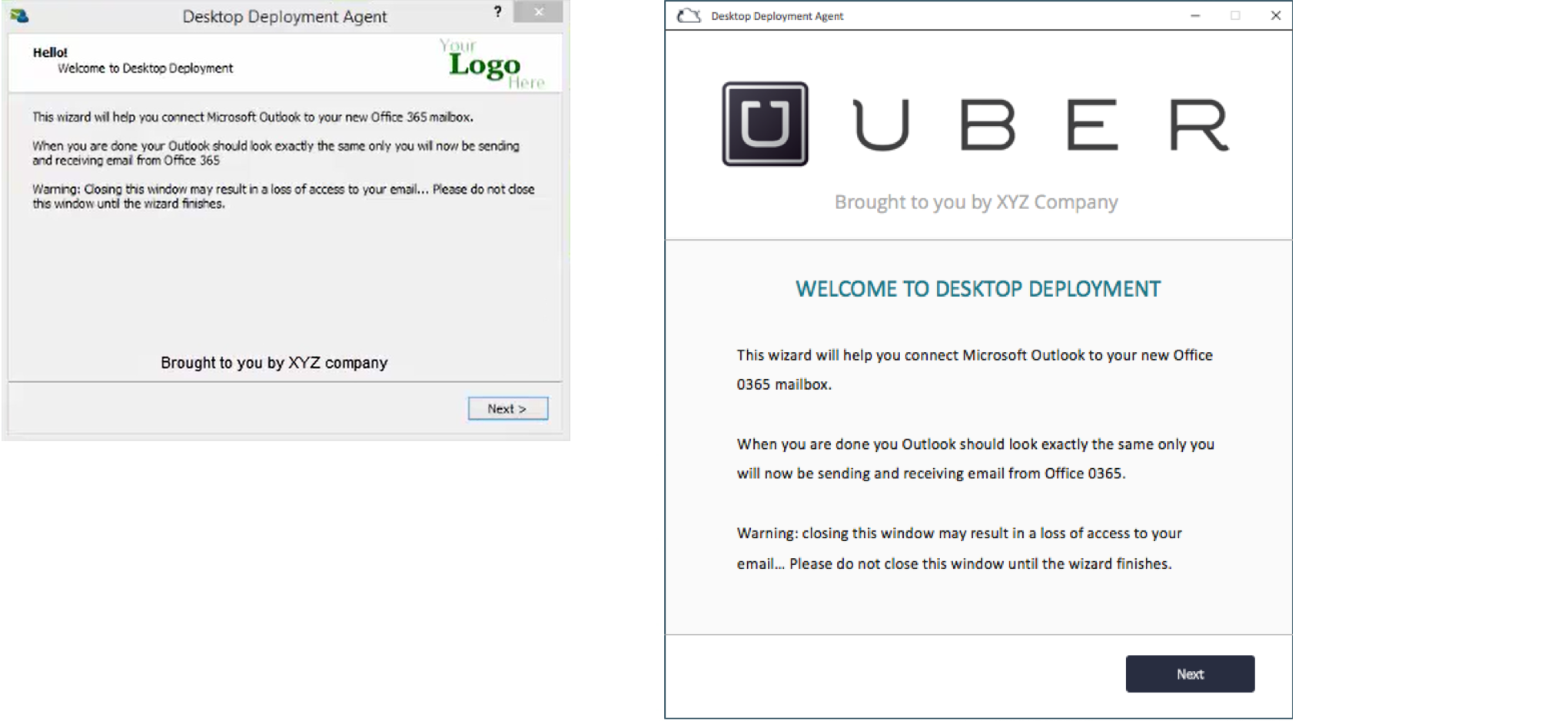CEO VISION
Collaborated with the CEO 1:1 to understand the big picture, then I was able to translate those visions visually to the team. At a high level, we needed to build a proactive/reactive notification system for enterprise customers to analyze their end-user entities’ using AI/ML technologies.
The recommendation engine would scan/analyze the data at scale for security issues, threat analysis, sensitive data, compliance, viruses, etc. The heart and soul of the MSP Complete system made it easy for IT to deploy remote automated services that are under management.
The press had early access to the platform. View
Activity Feed: The business vision was to have hundreds of services deployed remotely. The activity feed would be the first responder for IT professionals who can deploy a remote solution.

Customer Journey – Mapping
My process was designed to maximize communications with developers. I created UX/UI journey maps to walk developers through the interaction process. This approach helps to speed up the collaboration process.
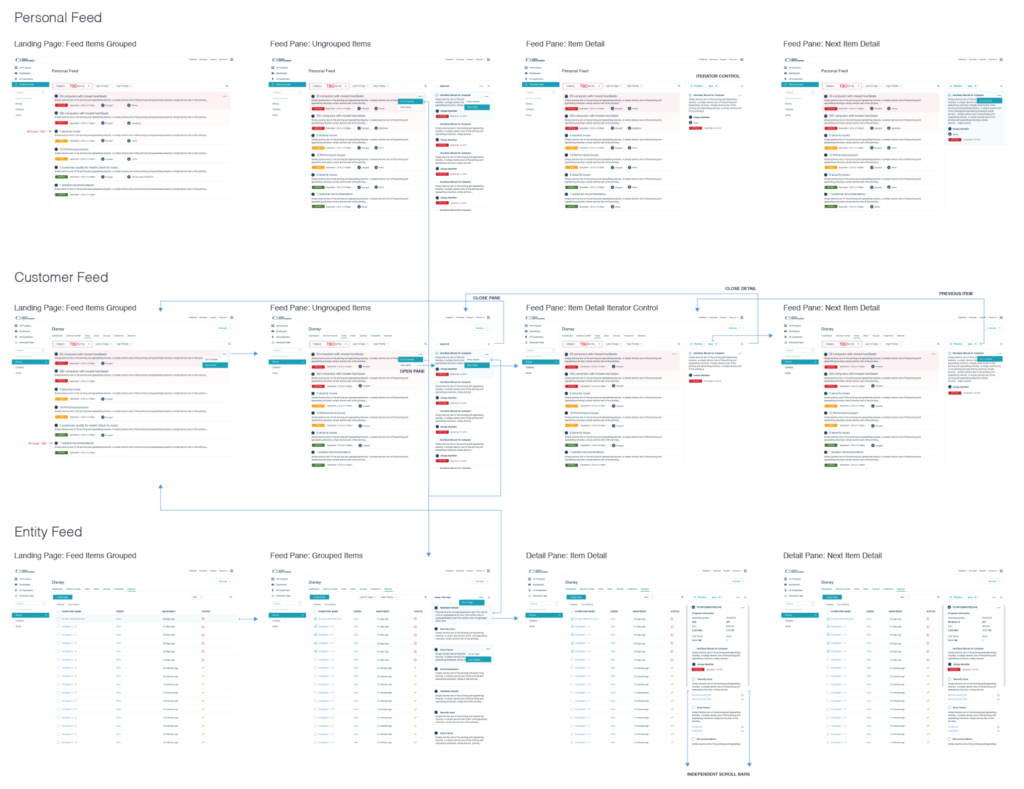
Customer Feedback – MVE Learnings
My original feed design was rough by necessity but flexible, allowing the team to focus on more important features. We had to ship with an MVP product, which was an amalgam of all individual feed types and events. This is agile thinking — recognizing you can’t expect to build everything, or we would never ship. One apparent feature was that similar feed types needed to be grouped to help with scale issues.

Concept Iterations – Low-Fidelity Mocks
Through multiple whiteboard sessions, the dev team was able to grasp a holistic view which helped synthesize the product features. Through collaboration, the team was able to understand the fundamental requirements before stories were created.
Discovery Phase: I created this high-level user flow to align the UI with the customer journey to visually represent the initial product feature goals.
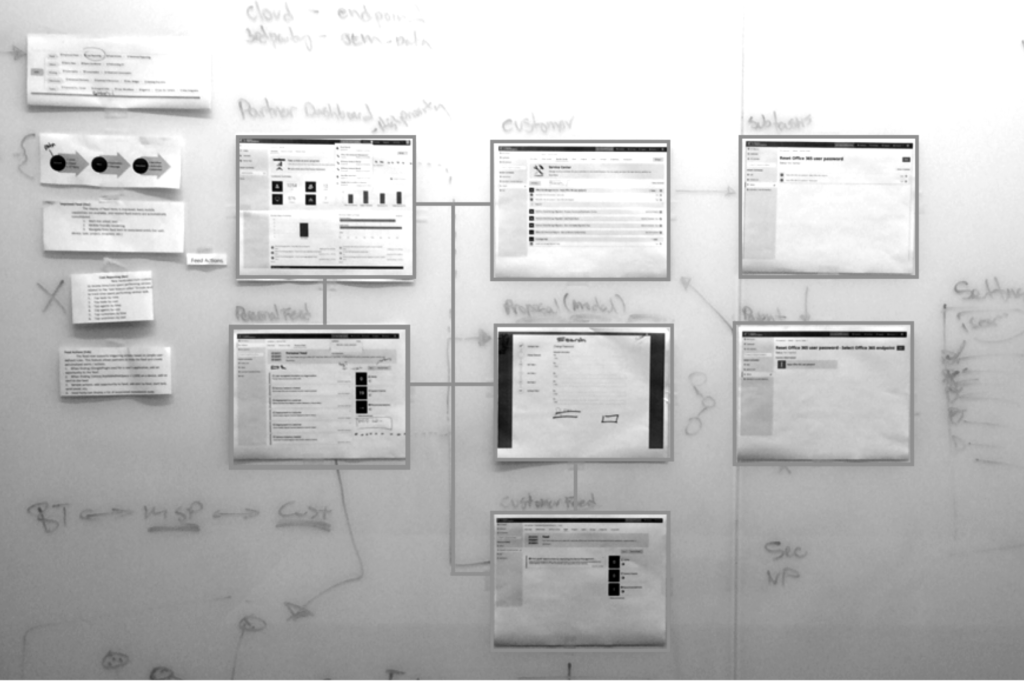
Activity Feed – Diagram Flow
Once an IT partner customer adds users and devices from Entity Management the platform will notify the IT professional with proactive/reactive types of notifications. The Activity feed would be the backbone for IT specialists on how to take action. I created high-level user flows to help the team understand the data flow.

Entity Management – Users/Devices
OVERVIEW
As lead designer one of the most important features of the managed service platform is the ability to view customer insights remotely to take advantage of the platform’s full capabilities. New services will be reflected in the platform once you add an entity (user or computer), the platform will analyze the customer data to be used for the suggestion engine.
USER INSIGHTS — CHART VIEW
From the user list management, an IT customer can quickly view user metadata details to evaluate what actions to perform on a device and other relevant data. The customer feedback was great since they don’t have to drill down to another level to view all relevant data. As a shortcut (Inventive), I added another chart panel to quickly see how many consumers have the heartbeat app (device agent) running, or other issues instead of drilling down to another page.
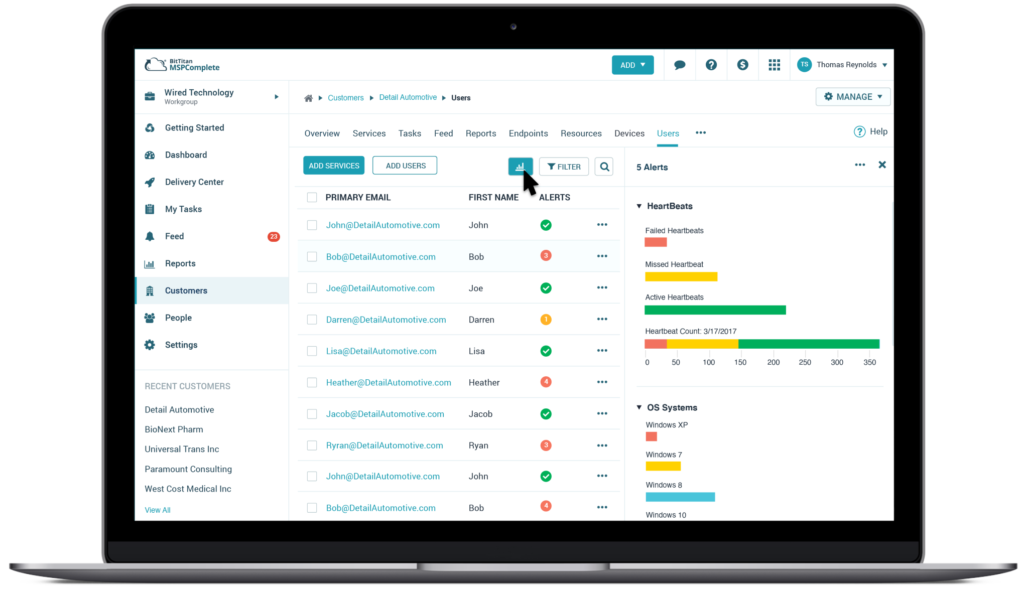
Customer Profile Management
Once the DMA was successfully deployed to a customer’s device the IT can perform simple tasks on the customer’s computer. The business vision was to support 100’s micro-services for IT professionals can perform system analysis. The DMA could be considered running in the background monitoring the heartbeat of a customer’s device. Using AI/ML an IT professional can receive Proactive or Reactive alerts letting them know how to remediate. In the UX/UI, I added different types of fly-in panels to prevent the customer from drilling down to another page.

Task Launcher – Full Modal Experience
Once a customer chooses a path to migrate the customer’s users the task launcher opens in a full modal experience showing the simple steps to complete the required tasks. BitTitan’s target market is customers such as universities who have 40k users that need to migrate from Office 365 to Gmail or vice versa. The Overview is the first step which gives clear customer guidance and a video tutorial showing how easy it is to deploy the DMA agent.
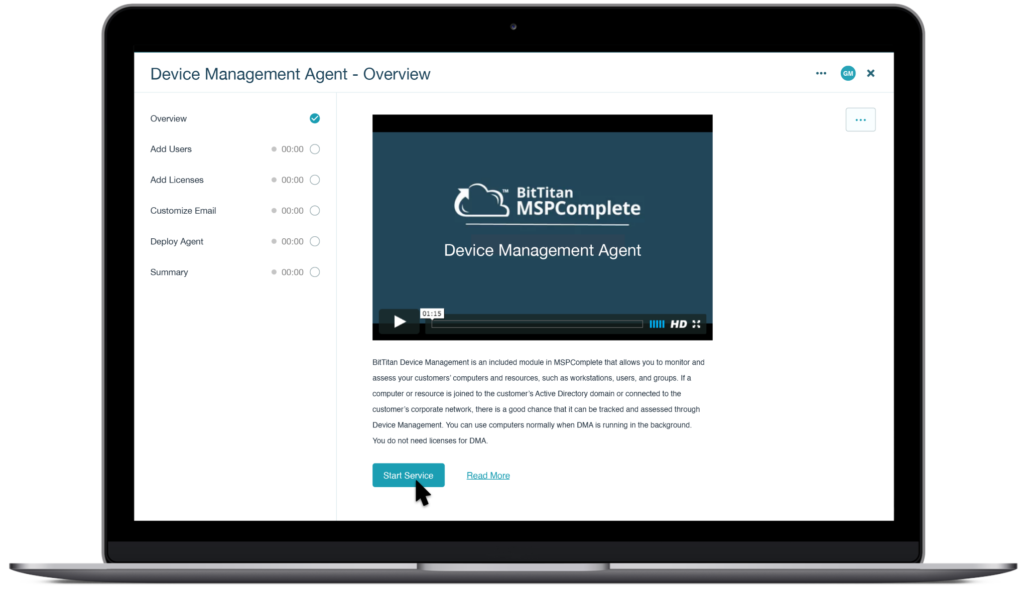
Device Management Agent – Empty State Since I designed the deployment agent (DMA) application it made sense for me to design the user invite workflow on how to set up and deploy the agent from the platform. The platform can remotely install the agent using GPO, Connectors, DeviceAgent.exe, or installed from an inbox email.

Results — The redesign increased the customer success rate by around 80%. I thought it would be a nice touch to add a little bit of eye candy (.gif animation) to let the user know the app is running during the configuration process since the process takes time to mirror and migrate the customer’s profile to the cloud.

The Design Challenge
DMA was developed as a universal shell app (C++) to be compatible with any type of OS, I was tasked to redesign the client app to improve the customer journey to be user-friendly. Trying to push the design… but being limited due to the app’s language limitations. I worked with a Dev 1:1 to recreate the status tracker progression and some visual animation to ease the customer the DMA was configuring the services on a customer’s machine.

The Beginning – Overview
A Device Management Agent (DMA) is the quickest and easiest way to remotely deploy and configure software applications on end users’ desktops or mobile devices without an IT physically touching the computer. DMA helps companies of all sizes deploy new software applications remotely or it can migrate mailboxes with a few simple user tasks.
Deployment Pro (DMA): Before – After
The original Deployment Pro, remote client agent looked like some type of malware, with a high customer drop-off rate due to the customer thinking they have some type of malware.
